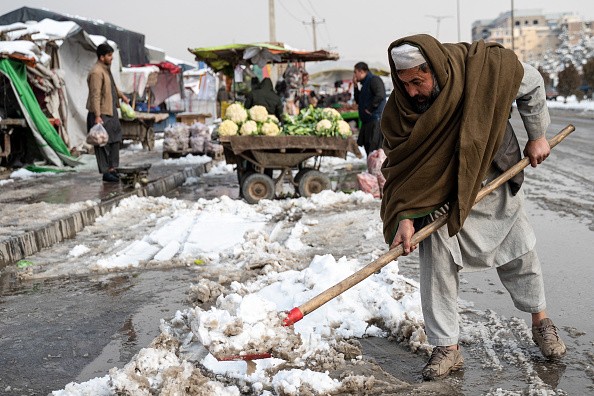A harsh and coldest winter pounded Afghanistan, leaving widespread livestock dead and 124 casualties due to freezing temperatures.
The challenging weather conditions became tough for many people in Afghanistan as many families could not up with the frigid weather.
According to BBC's latest news, the State Ministry for Disaster Management spokesman explained that the harsh weather in the country is considered the coldest in a decade.
As freezing temperatures unfolded, cold-related health concerns would become the main issue that could lead to hypothermia, frostbite and death.
Freezing weather conditions

In a recent report, the BBC News reported that the casualties reached 124 people, which is expected to rise.
Furthermore, the 77,000 livestock in Afghanistan were also affected and perished due to the extreme weather conditions.
Many families in Afghanistan suffer from poverty and hunger. The effect on the livestock would negatively affect homes and families that depend on local agricultural supplies.
Meanwhile, CNN World News reported that Afghanistan had experienced a temperature drop since the beginning of January.
The challenging weather conditions in Afghanistan became more tragic for many farmers after the country suffered from prolonged drought.
CNN added that about 28 million people in Afghanistan require humanitarian assistance, based on the United Nations Office for the Coordination of Humanitarian Affairs (UNOCHA).
With the declining humanitarian assistance due to the country's restrictions, aid delivery became more troublesome for concerned NGOs.
On the contrary, the UNOCHA on Twitter said that the agency would deliver humanitarian help to the country by providing blankets, winter support, heating and shelter repair.
Families without heating systems and living in poverty lines would be the most affected by the harsh weather.
Furthermore, BBC reported that the heavy snow became more difficult for rescue operations. Helicopters were deployed to offer immediate assistance.
The report explained that people in far-flung rural areas would suffer more from extreme weather conditions.
Afghans in mountainous areas do not have access to health care and winter support. Meanwhile, the delivery of assistance is also more complicated due to the heavy snow.
Climate change
According to Afghanaid, the impact of climate is devastating to Afghanistan as the country's food sources depend on local agricultural supplies.
The report explained that the country is vulnerable to climate change and extreme weather events.
The country lacks disaster preparedness and equipment to anticipate and deal with extreme weather events.
Banned the female in aid agencies in Afghanistan
On the contrary, CNN News and BBC explained that banning Afghan women from being involved in aid agencies added more difficulty to humanitarian assistance.
Due to the banning, major foreign support groups in Afghanistan decided to suspend humanitarian operations in the country.
The report noted that restricting female workers in important aid agencies violates women's rights and would make it more problematic for the country.
The United Nations urged the country to lift the banning, especially since Afghanistan is in the middle of a crisis.
Banning female workers would risk essential humanitarian help to the country.
Did you know?
- According to the Swedish Committee for Afghanistan, the parts of Northern and Western Afghanistan have suffered from prolonged drought, making it more challenging for farmers.
- The snow occurs around October and April. The country experiences hot and cold weather conditions.
Related Article : Winter Storm: How to Survive Freezing Weather, Icy Conditions
For more similar, don't forget to follow Nature World News.
© 2025 NatureWorldNews.com All rights reserved. Do not reproduce without permission.





